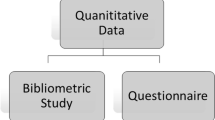Abstract
Progressive urbanization and the concomitant requirement to develop new cities fuels the need for more sub-surface utility infrastructure. Conventional methods of utility placement, i.e. open-cut trenching techniques, are expensive in terms of their many social, environmental, and indirect economic costs. This necessitates consideration of alternative construction methods such as Multi-Utility Tunnels (MUTs). However, a lack of quantification of their short-term and long-term costs and impacts (i.e. a comprehensive understanding of all the consequences of moving to MUTs) inhibits uptake. Carbon accounting, a globally important consideration, is increasingly adopted within the construction industry and could be used as a convincing argument for why alternatives such as MUTs might be a preferred method of utility placement in cities that are advancing global sustainability agendas. This paper compares carbon cost estimations of open-cut excavations with flush-fitting MUTs. The results show that although flush-fitting MUTs have much greater carbon footprints in the short-term compared to open-cut installation methods, they would save a considerable amount of carbon in the long-term (over their lifetime) by eliminating the need for numerous excavation and reinstatement (E&R) procedures, which are inevitable for repair and maintenance of buried utility services. The research reveals the tipping points in favour of flush-fitting MUTs, in terms of carbon saved, when repetitive E&R works are eradicated, to support their adoption.
Access this chapter
Tax calculation will be finalised at checkout
Purchases are for personal use only
Similar content being viewed by others
References
Aggregate Industries (2012) Charcon specialist products (Online). http://www.aggregate.com/our-businesses/charcon-specialist-products/
Almulhim MSM, Hunt DVL, Rogers CDF (2020) A resilience and environmentally sustainable assessment framework (RESAF) for domestic building materials in Saudi Arabia. Sustainability 12(8):3092
Athena Sustainable Materials Institute (2011) Athena Institute Database (online). http://www.athenasmi.org/our-software-data/lca-databases/
Boustead I, Hancock GF (1979) Handbook of industrial energy analysis. Ellis Horwood, Chichester
Brand JH, Spencer KL, O’Shea FT, Lindsay JE (2017) Potential pollution risks of historic landfills on low-lying coasts and estuaries. WIREs Water 2017, e1264, 12 p https://doi.org/10.1002/wat2.1264
Carbon Trust (2011) Carbon footprint calculator (online). http://www.carbontrust.co.uk/cut-carbon-reduce-costs/calculate/footprint-calculator/pages/footprinting-tools.aspx
Chartered Institution of Building Services Engineers (CIBSE) (2006) Thermal properties of buildings and components, Guide A: environmental design, 7th edn. CIBSE, London Chapter 3
Clarke BG (2010) Briefing: carbon critical design. In: Proceedings of the institution of civil engineers—engineering sustainability vol 163, no 2, pp 57–59
Environment Agency (EA) (2011) Carbon calculator for construction activities (online). http://www.environment-agency.gov.uk/business/sectors/37543.aspx
FT Pipeline Systems (2012) Steel pipe weight calculator (Online). http://www.ftpipelinesystems.co.uk/pipe_weight_calculator.cfm
Hammond GP, Jones CI (2008) Embodied energy and carbon in construction materials. In: Proceedings of the institution of civil engineers—energy, vol 161, no 2, pp 87–98
Hammond GP, Jones CI (2011) Inventory of carbon & energy (ICE) Version 2.0. University of Bath, Bath, UK
Hojjati A, Jefferson I, Metje N, Rogers CDF (2016) Sustainable asset management for utility streetworks. In: Mair RJ, Soga K, Jin Y, Parlikad AL, Schooling JM (eds) Transforming the future of infrastructure through smarter information: proceedings of the international conference on smart infrastructure and construction (ICSIC 2016). ICE Publishing, London, UK, pp 669–674
Hojjati A, Jefferson I, Metje N, Rogers CDF (2017) Embedding sustainability criteria into pre-appraisal of underground utility for future cities. In: Proceedings of the institution of civil engineers—urban design and planning, vol 170, no 6, pp 258–271
Hojjati A, Jefferson I, Metje N, Rogers CDF (2018) Sustainability assessment for urban underground utility infrastructure projects. In: Proceedings of the institution of civil engineers—engineering sustainability, vol 171, no 2, pp 68–80
Hunt DVL, Jefferson I, Drinkwater NK, Rogers CDF (2012) Sustainable utility placement for University Campuses. In: Hryciw RD, Athanasopoulos-Zekkos A, Yesiller N (eds) GeoCongress 2012: state of the art and practice in geotechnical engineering. American Society of Civil Engineers, Reston, VA, USA, Geotechnical Special Publication no. 225, pp 4309–4318
Hunt DVL, Nash D, Rogers CDF (2014) Sustainable utility placement via multi-utility tunnels. Tunn Undergr Space Technol 39:15–26
Knight DF, Addis W (2011) Embodied carbon as a design tool—a case study. Buro Happold (online). http://www.chinagb.net
Rogers CDF, Hunt DVL (2006) Sustainable utility infrastructure via multi-utility tunnels. In: Proceedings of the Canadian Society of civil engineering 2006 conference, towards a sustainable future, Calgary, Canada, 23rd–25th May
Swiss Centre for Life Cycle Inventories (2011) Ecoinvent (online). http://www.ecoinvent.ch/
U.S. Department of Energy (2011) National Renewable Energy Laboratory, US Life Cycle Inventory Database (online). http://www.nrel.gov/lci/
Waste Recycling Environmental Limited (2012) WREN distance to landfill site calculator (Online). http://www.wren.org.uk/apply/distcalc
Acknowledgements
The authors gratefully acknowledge the financial support of the UK Engineering and Physical Sciences Research Council under grant numbers EP/F065965 (Mapping The Underworld), EP/K021699 (Assessing The Underworld), and EP/P013635 (UKCRIC National Buried Infrastructure Facility).
Author information
Authors and Affiliations
Corresponding author
Editor information
Editors and Affiliations
Rights and permissions
Copyright information
© 2023 Canadian Society for Civil Engineering
About this paper
Cite this paper
Hojjati, A., Hunt, D.V.L., Rogers, C.D.F. (2023). Assessing the Carbon Cost of Utility Installation via Multi-Utility Tunnels (MUTs). In: Walbridge, S., et al. Proceedings of the Canadian Society of Civil Engineering Annual Conference 2021 . CSCE 2021. Lecture Notes in Civil Engineering, vol 251. Springer, Singapore. https://doi.org/10.1007/978-981-19-1029-6_12
Download citation
DOI: https://doi.org/10.1007/978-981-19-1029-6_12
Published:
Publisher Name: Springer, Singapore
Print ISBN: 978-981-19-1028-9
Online ISBN: 978-981-19-1029-6
eBook Packages: EngineeringEngineering (R0)




